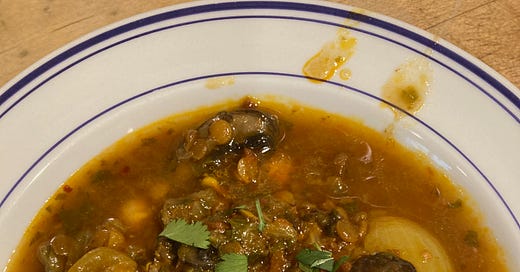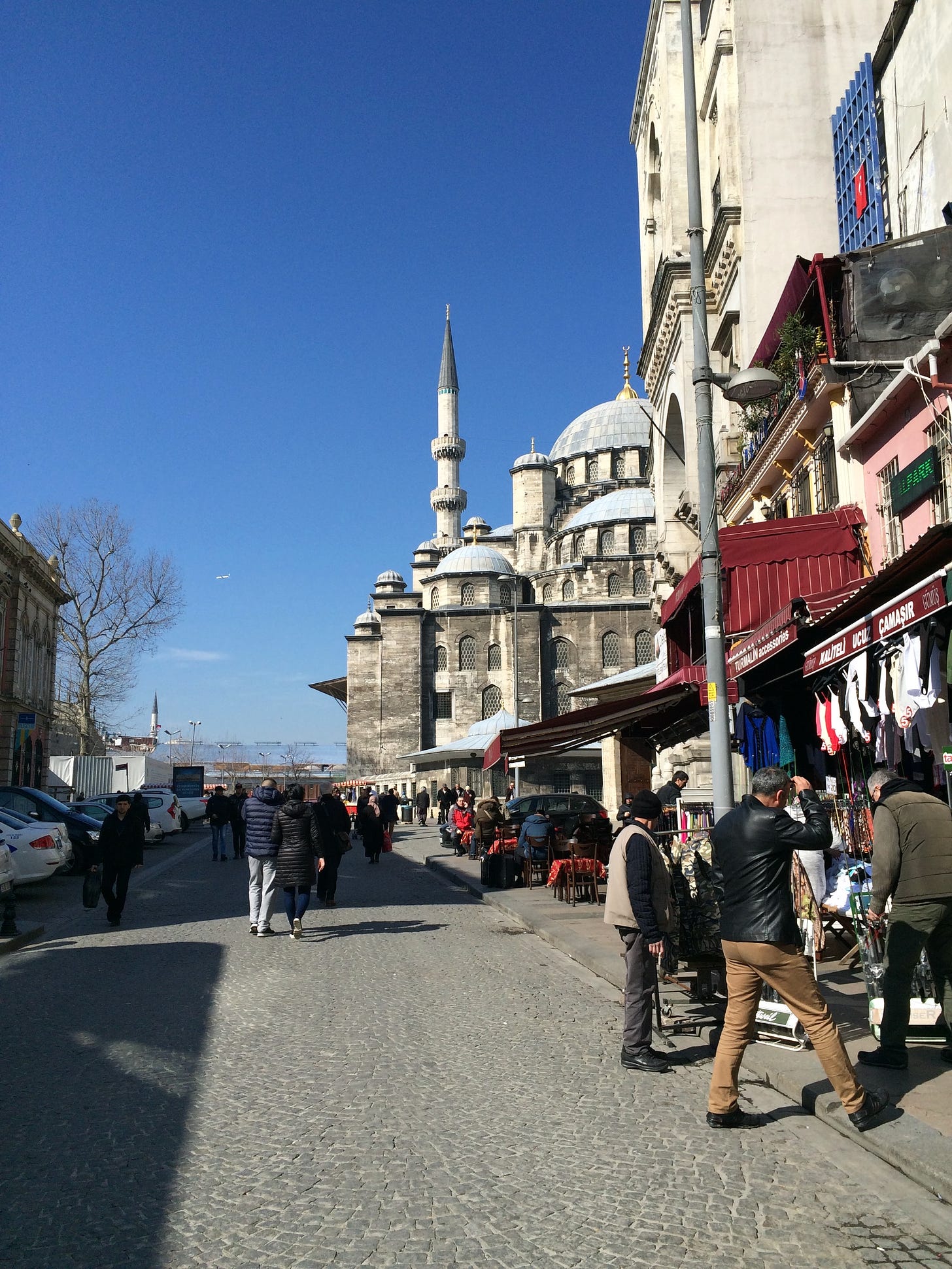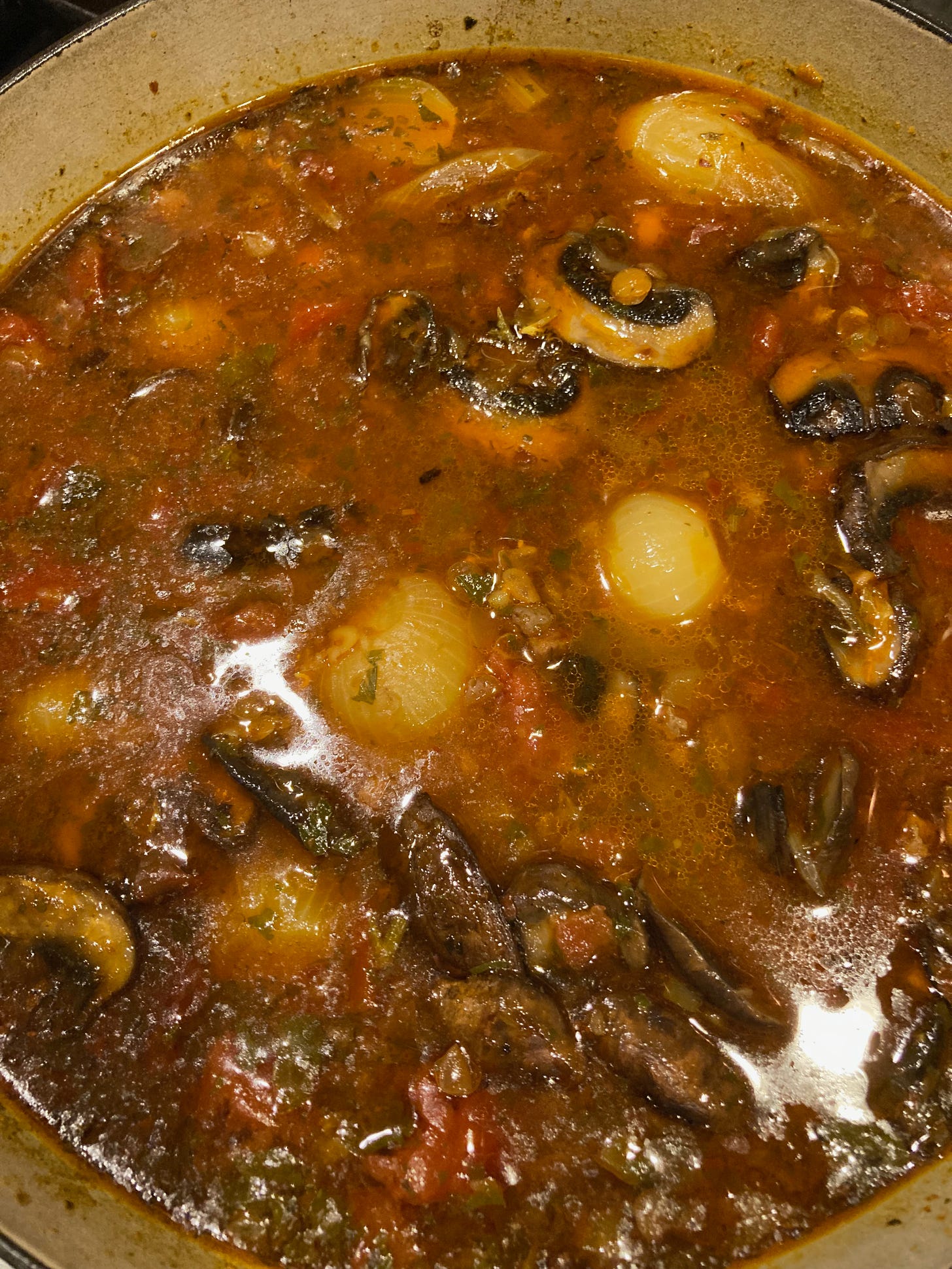A bowl of harira, complete with chopped cilantro on top
One year when I was living in Italy I went to Tunisia for Christmas. Actually, it was an attempt with my daughter to escape Christmas which, even in Italy, had become unbearably commercial. The too familiar hassle of cheap tinsel and blinking lights, the infuriatingly repetitive music about snow and sleigh bells, and the constant push to buy-buy-buy, all got on my nerves. Tunisia, a majority Moslem country, seemed like a good place to escape it all. In the event, I did run into Santa Claus, complete with those preposterous sleigh bells, on Christmas Eve in a French restaurant in Souss of all places, but more importantly, I ran bang into Ramadan, which that year (1998, my daughter reminds me) fell in late December.
This year Ramadan falls in springtime, that is, right now, with a month-long period of fasting from late March into most of April. It began last Wednesday night when the first crescent of a new moon appeared in the eastern skies, and all over the world, with the possible exception of Antarctica, some two billion (that’s 2,000,000,000 I think) Moslems began the fast, taking no food or drink from sun up to sundown throughout the month and spending that time, supposedly, in prayer and meditation. It’s one of the five holy obligations of Islam. (The others are: to pray five times daily; to make a pilgrimage to Mecca; to practice charity; and, most important of all, to profess the very simple Islamic declaration of faith, “There is no God but God and Muhammad is God’s Messenger.”)
Because the Islamic calendar is based on the moon, Ramadan actually falls at a different time each of our calendar years, ending up in different seasons, which is why it coincided with Christmas in 1998. It made travel a bit difficult since most restaurants were closed throughout the day. In hotels we could get breakfast and lunch, but the dining room windows were papered over so fasting folks could not see us gorging ourselves on some very simple fare. Simple because, of course, the kitchen and wait staff were also fasting. Preparing and serving food was a double penalty, leading to a limited menu of mostly grilled cheese sandwiches
In Istanbul, the Yeni Valide mosque near the Egyptian market.
But in the evening, it all changed dramatically. The sun went down, a cannon boomed, and from the minaret of every mosque in town, overlapping each other, came the calls to prayer, repeated one after the other: Allahu akbar, God is great, all the way through to the final la illa ill Allah, there is no God but God. And suddenly it seemed the door to every house burst open and out surged a crowd, a horde of men, women, and children, overflowing the streets and markets, strings of colored lights came on, illuminating every mosque and minaret, shop doors opened, stalls emerged, and there were suddenly throngs of people, celebrating, greeting each other, shopping for food, rushing home to prepare the iftar, the often elaborate feast that breaks the daily fast and gathers families and friends together.
Much later, visiting relatives in Morocco, I came across this amazing dish, harira, which they told me is traditionally served at the iftar feast but it’s a favorite on any occasion that calls for deeply flavorful, robust, sustaining fare. It’s called a soup but harira is really more of a stew, featuring chickpeas, lentils, and a little meat, fragrant with the array of aromatics that distinguishes Moroccan kitchens (cinnamon, ginger, saffron, coriander, cumin, turmeric, cardamom), with a deluge of fresh chopped cilantro showered over the top just before serving.
Keep reading with a 7-day free trial
Subscribe to On the Kitchen Porch to keep reading this post and get 7 days of free access to the full post archives.






